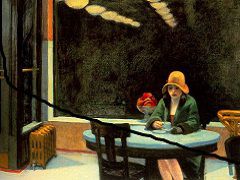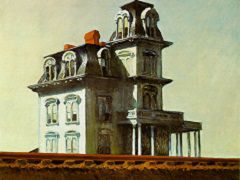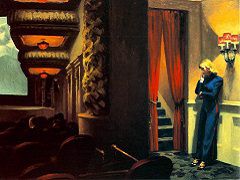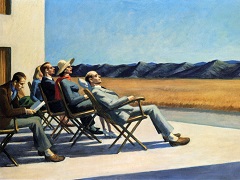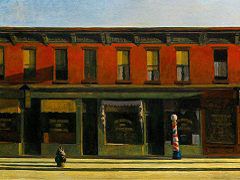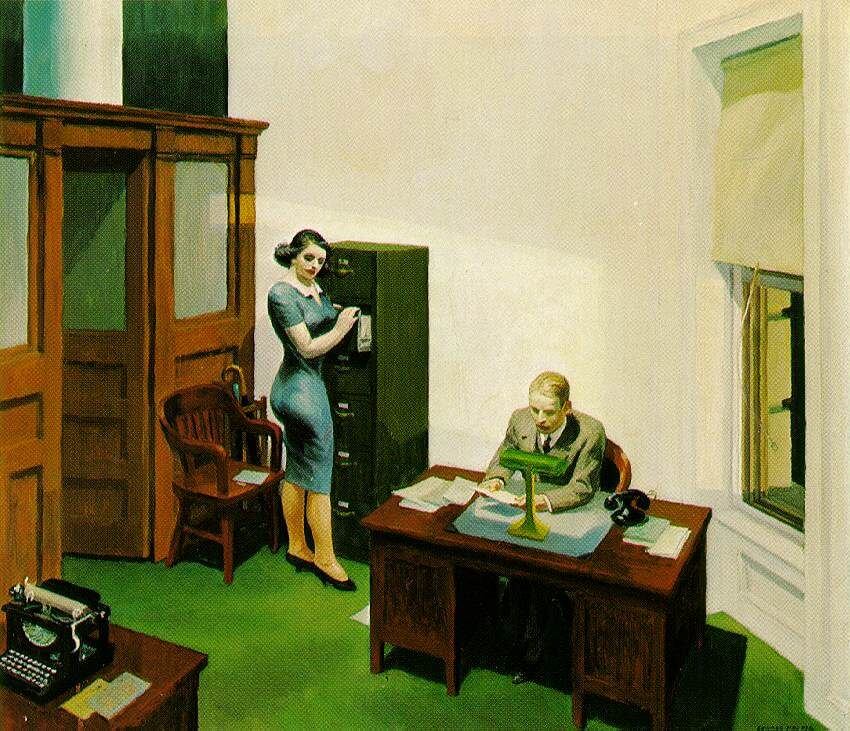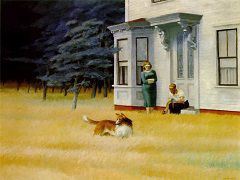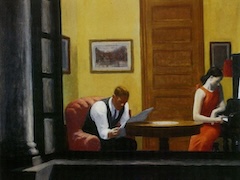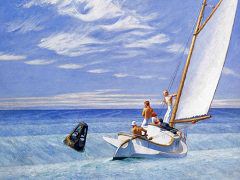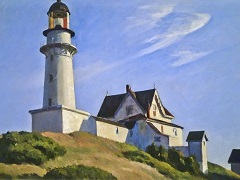Morning Sun, 1952 by Edward Hopper

Edward Hopper was one of the early American artists to paint the experience of human isolation in the modern city. In Morning Sun, the woman - modeled after Hopper's wife, Jo - faces the sun impassively and seemingly lost in thought. Her visible right eye appears sightless, emphasizing her isolation. The bare wall and the elevation of the room above the street also suggest the bleakness and solitude of impersonal urban life.
A consideration of Hopper's work would be incomplete without looking at some of his later pictures, in which his ways of seeing and painting achieved full fruition. In connection with one of his early painting, Lighthouse Hill, we postulated an observer whose "absolute" way of perceiving does not categorize objects according to their usefulness nor seek to possess them. This way of perceiving the world, however, was not achieved by any of the human figures depicted in Hopper's paintings. Not until his later works did a changed view of man appear. In Morning Sun, for example, painted in 1952, a person is portrayed for the first time as a fully perceiving being; the picture successfully depicts the mediation between inner reality and the outside world.


